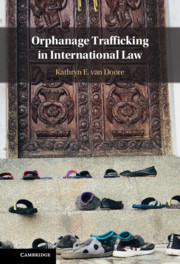Book contents
- Orphanage Trafficking in International Law
- Orphanage Trafficking in International Law
- Copyright page
- Dedication
- Contents
- Acknowledgements
- Introduction
- 1 The Process of Orphanage Trafficking in Developing States
- 2 The Enabling Environment for Orphanage Trafficking
- 3 The Demand of Orphanage Tourism
- 4 Situating Orphanage Trafficking in International Law
- 5 Responding to Orphanage Trafficking
- Conclusion
- Bibliography
- Index
1 - The Process of Orphanage Trafficking in Developing States
Published online by Cambridge University Press: 23 December 2021
- Orphanage Trafficking in International Law
- Orphanage Trafficking in International Law
- Copyright page
- Dedication
- Contents
- Acknowledgements
- Introduction
- 1 The Process of Orphanage Trafficking in Developing States
- 2 The Enabling Environment for Orphanage Trafficking
- 3 The Demand of Orphanage Tourism
- 4 Situating Orphanage Trafficking in International Law
- 5 Responding to Orphanage Trafficking
- Conclusion
- Bibliography
- Index
Summary
Chapter 1 articulates the process of orphanage trafficking in developing states. It explains how the recruitment of a child into an orphanage occurs and describes how the process of orphanage trafficking manipulates the procedural aspects of gatekeeping into alternative care by claiming children are abandoned or orphaned rather than relinquished. This manipulation is critical in the orphanage-trafficking process as it indicates an intent by the involved orphanage operators to utilise the alternative care framework to justify the admission of children into care. The final part of the orphanage-trafficking process is the maintenance of the child in institutionalisation for the purpose of exploitation and profit through donor funding and orphanage tourism. The chapter then turns to establishing the prevalence of orphanage trafficking in developing states across the world. To do this, it focuses on four regions where there is evidence that the rising number of children in institutional care is in part due to the presence of donor funding and orphanage tourism: Sub-Saharan Africa, South Asia, South East Asia, and Latin America and the Caribbean.
Keywords
- Type
- Chapter
- Information
- Orphanage Trafficking in International Law , pp. 19 - 52Publisher: Cambridge University PressPrint publication year: 2022



